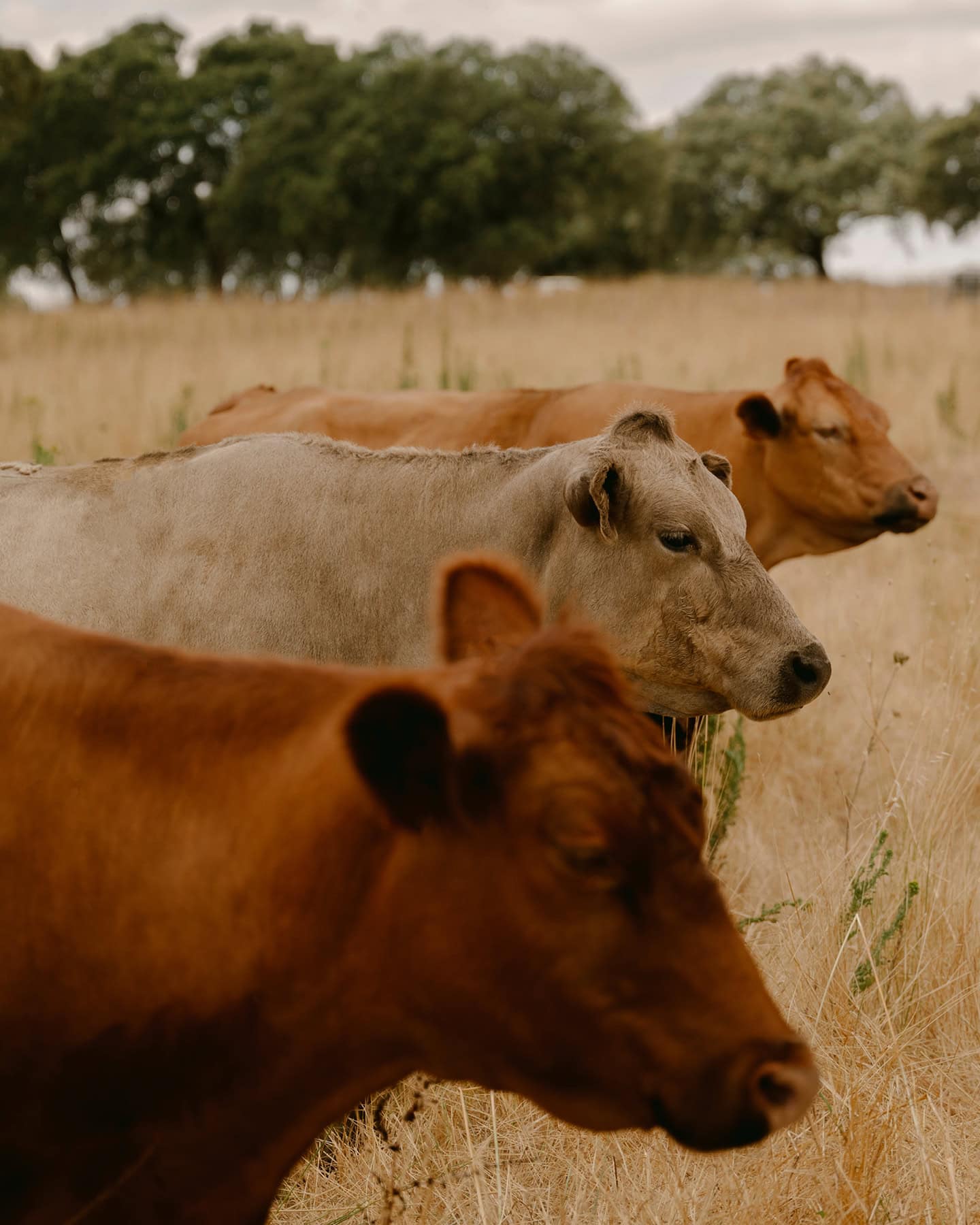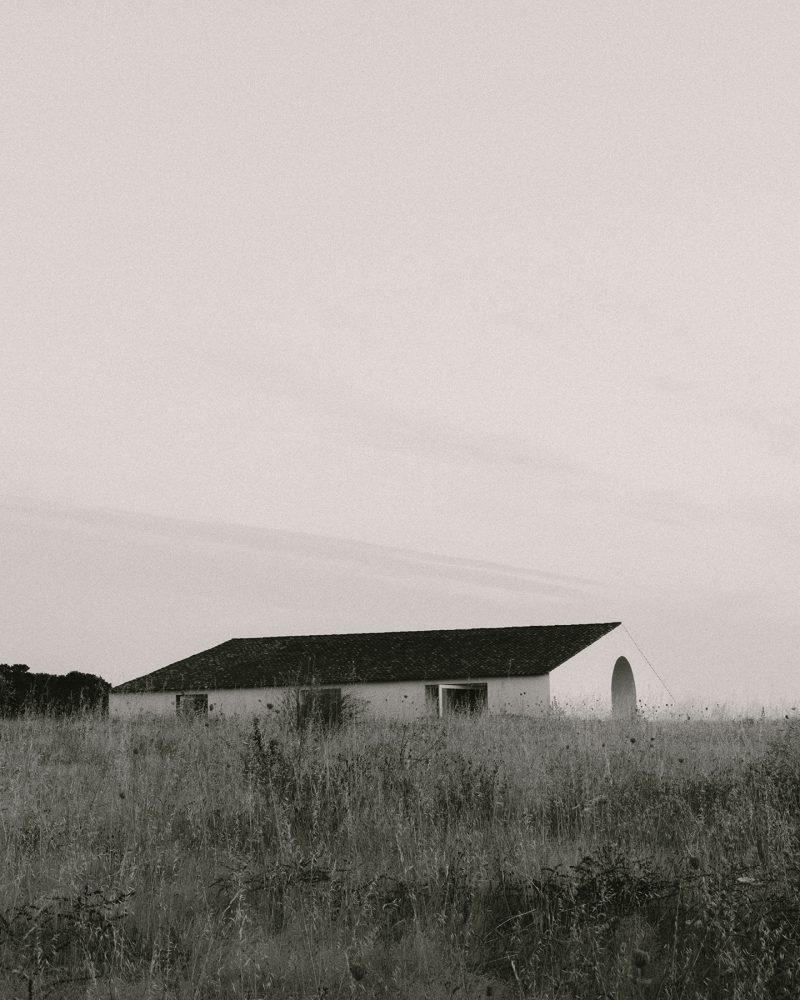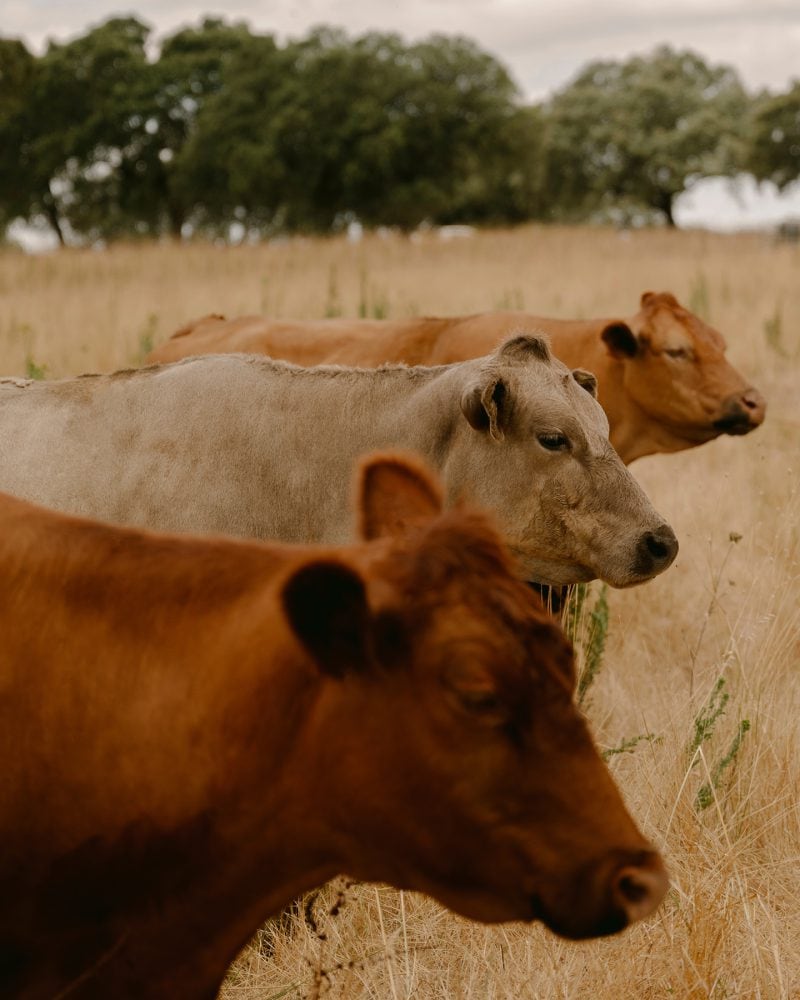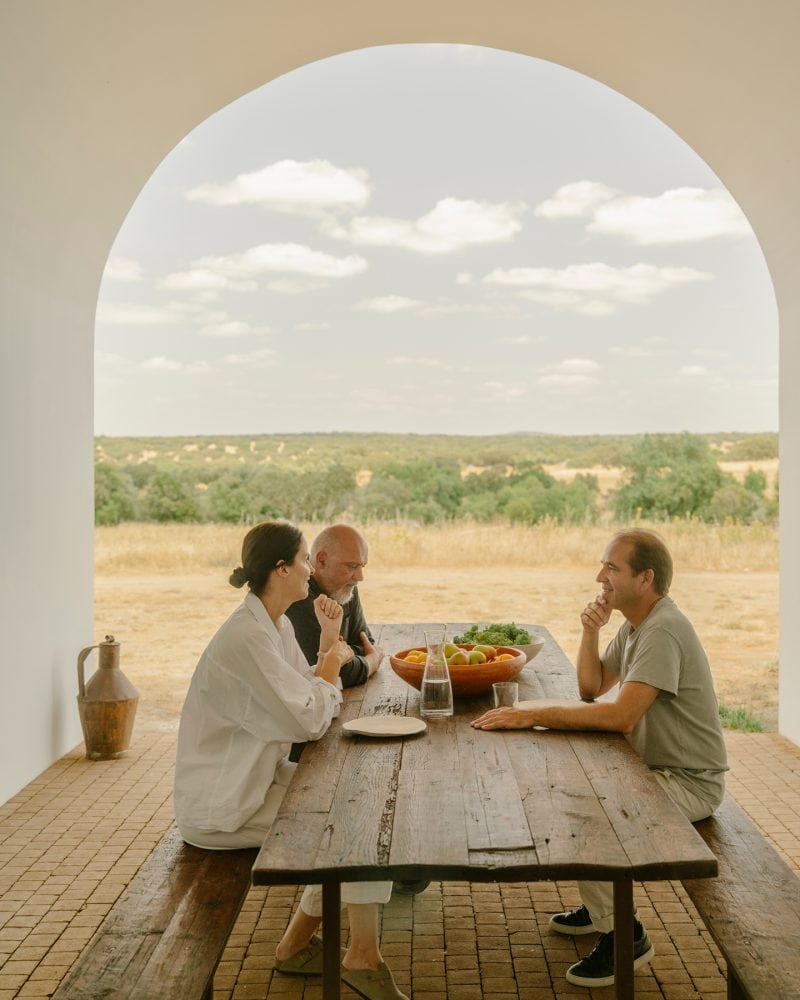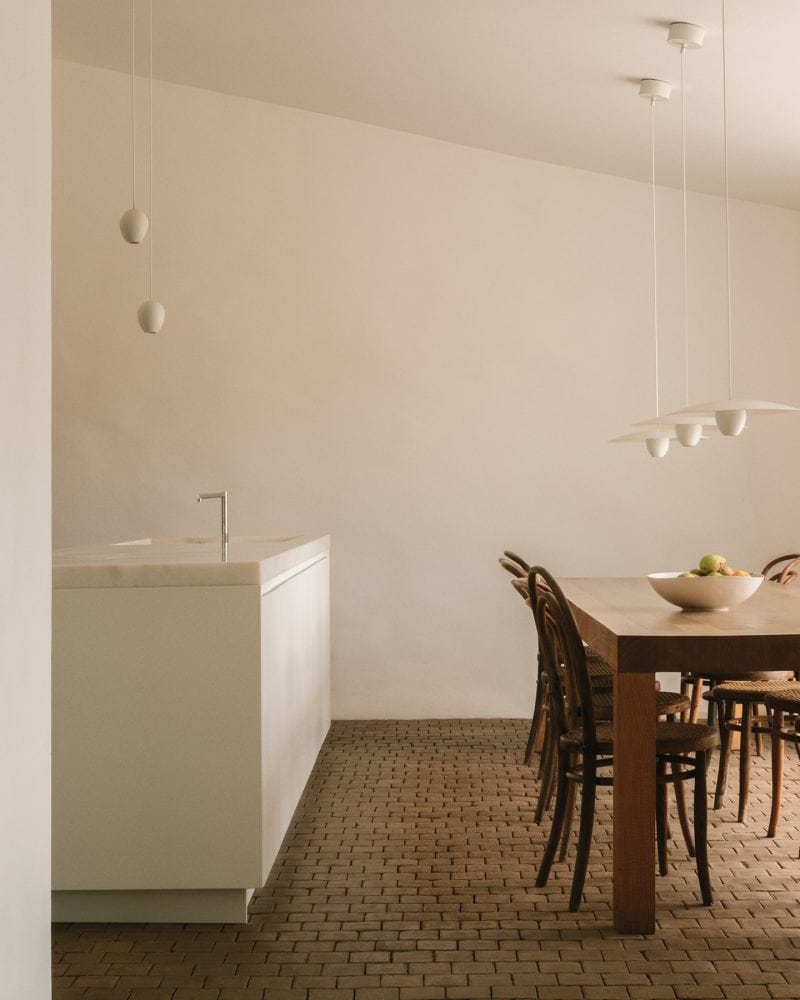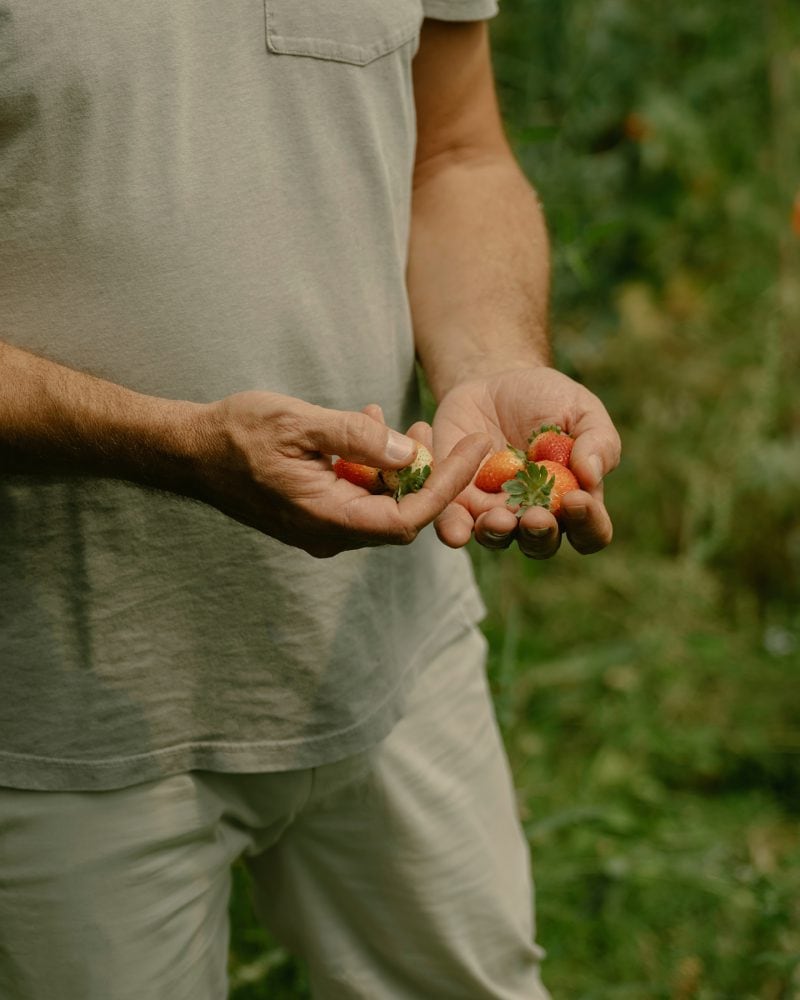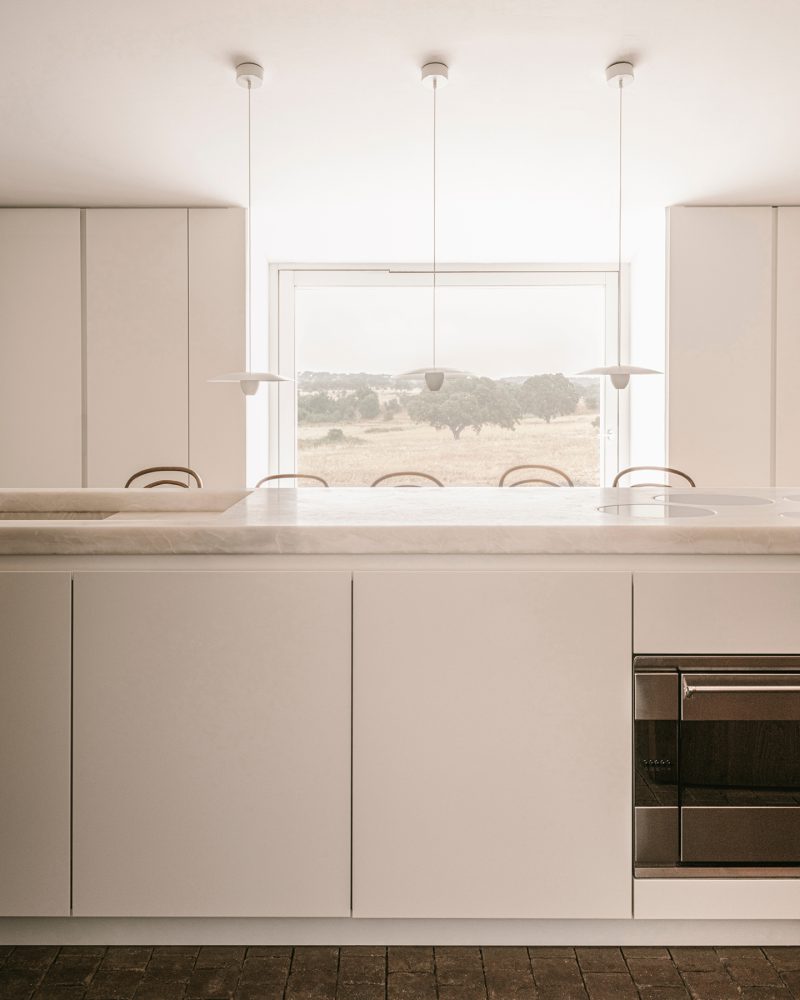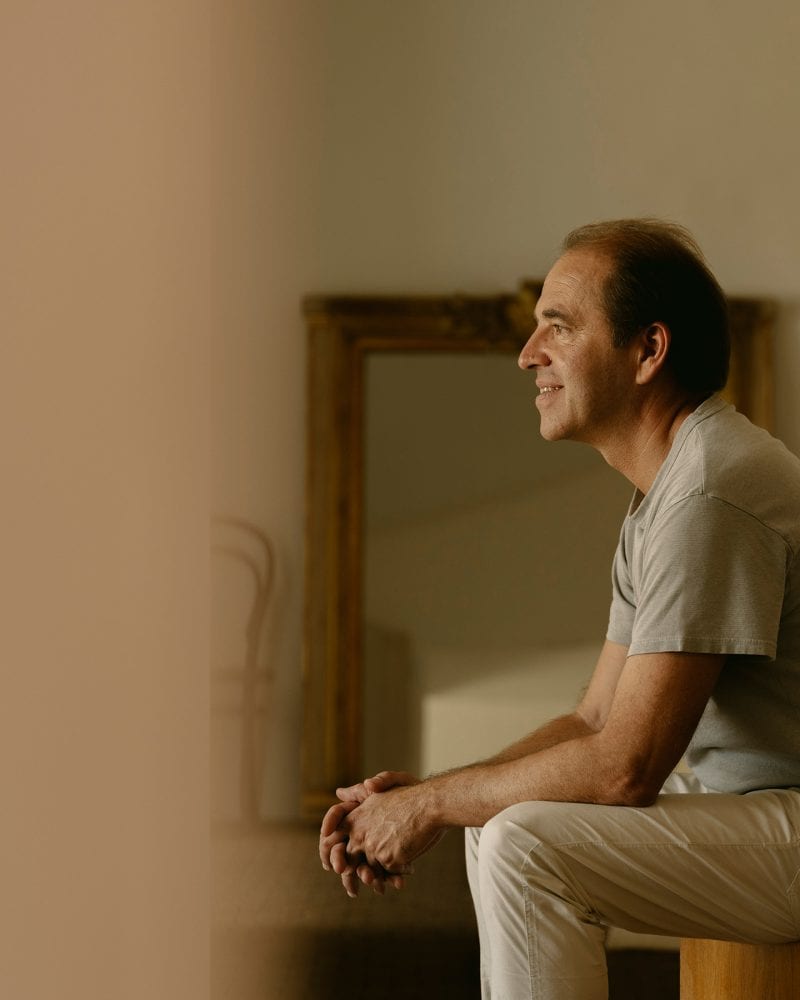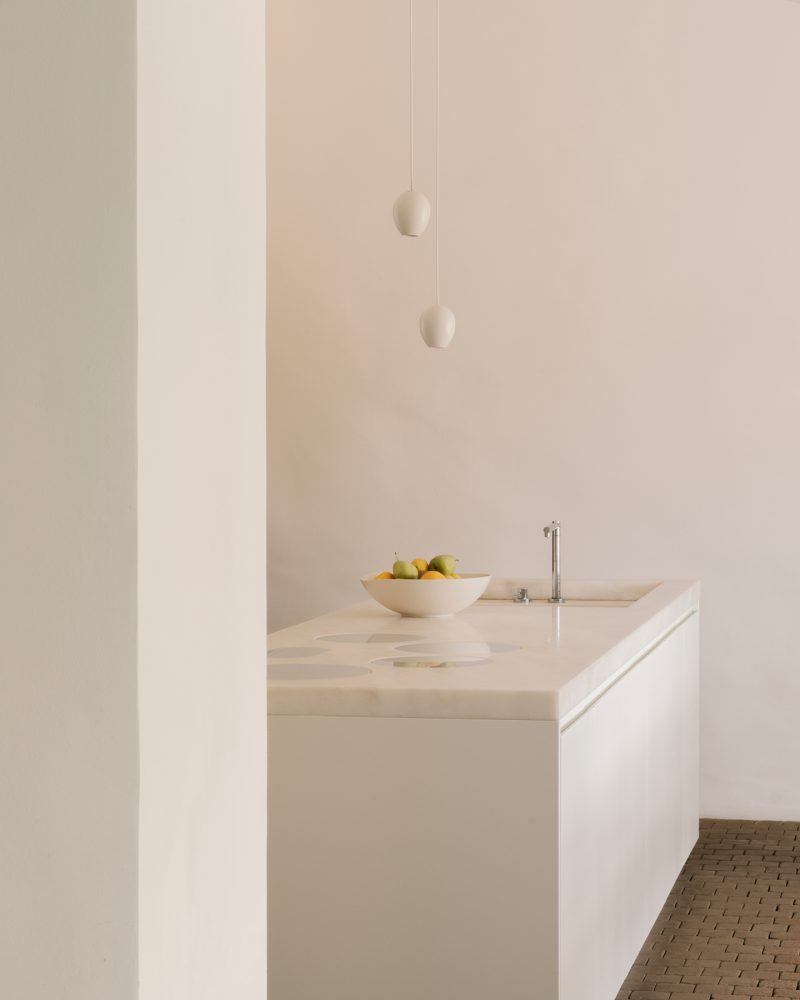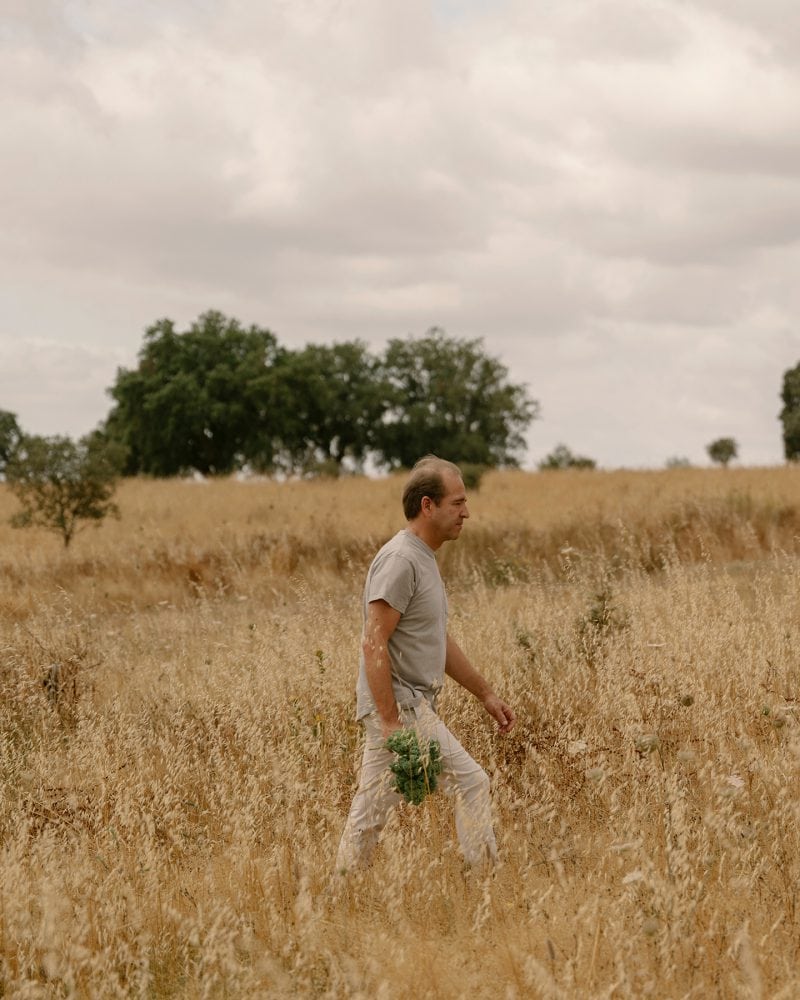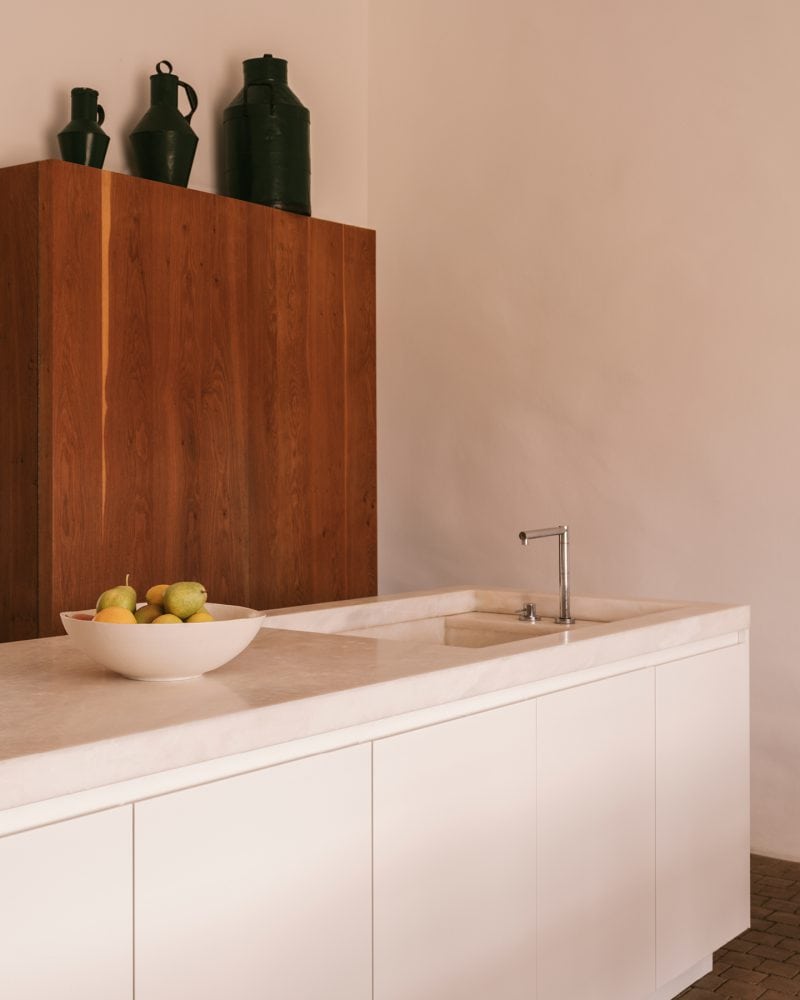There is a subtle parallel in Arclinea’s “Extraordinary, Everyday” project: transforming the kitchen, a symbol of contemporary hyper-efficiency, into a place that slows down movements and expands time. The Alentejo region in Portugal is the setting for the third episode of the series, Casa no Tempo, which is not just about design, but about hospitality built by bricks and dishes.
The house, designed by architect Manuel Aires Mateus and owned by the family of João Rodrigues, seems to rise from the landscape as naturally as the wild plants that surround it. White, handle-free, and minimalist to the point of being transparent, Arclinea’s Thea kitchen has no rush, only the desire to live in harmony with its environment.
Criticism of sterile minimalism, often accused of excessive abstraction, is refuted here. The purity of the lines is not an aesthetic thing, but an invitation to concentrate. The free, bright, almost monastic space lets the importance of everyday actions shine through. Scenes like kneading bread, cutting herbs picked nearby, and cooking together are at the heart of the project.
Casa No Tempo is part of a constantly changing agricultural and human cycle. Free-ranging animals and the earth that rests enter the kitchen in the form of not only food, but also language, giving life to an aesthetic that is not just industrial design, but domestic ecology.
Daniel Civetta’s photographs show interiors and conviviality without dramatization. No staging, just life as it happens. It is a representation light years away from catalog storytelling. In these photos, design is documentary, not decoration.
In this sense, Arclinea works on an interesting line, designing not only kitchens but also choreographies of everyday life. In Mexico, with Rain Harvest Home, the focus was on water; in Iceland, with chef Gísli Matt, it was on gastronomic rituals linked to extreme nature. In Portugal, the central element is time itself, or rather the interpretation of slowness as luxury.
In Casa No Tempo the kitchen is never just about technique or function, but a place of connections. In the kitchen those who cook and those who eat, what grows outside and what is consumed inside, are bonded. In 2025, when everything is rushing by, this is maybe the most radical form of design: building spaces that teach us to pause.
